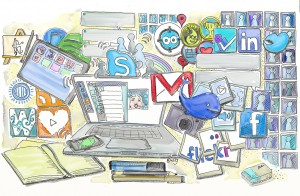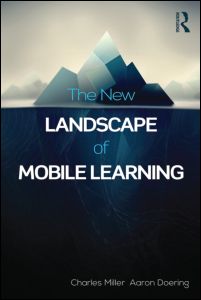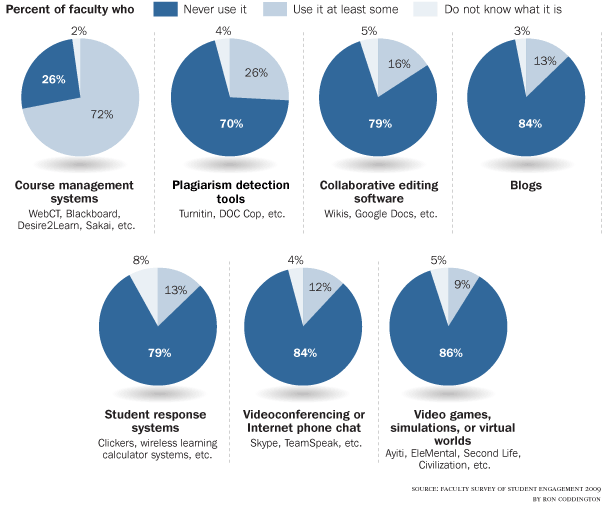5 Pivot Points for Technology Integration
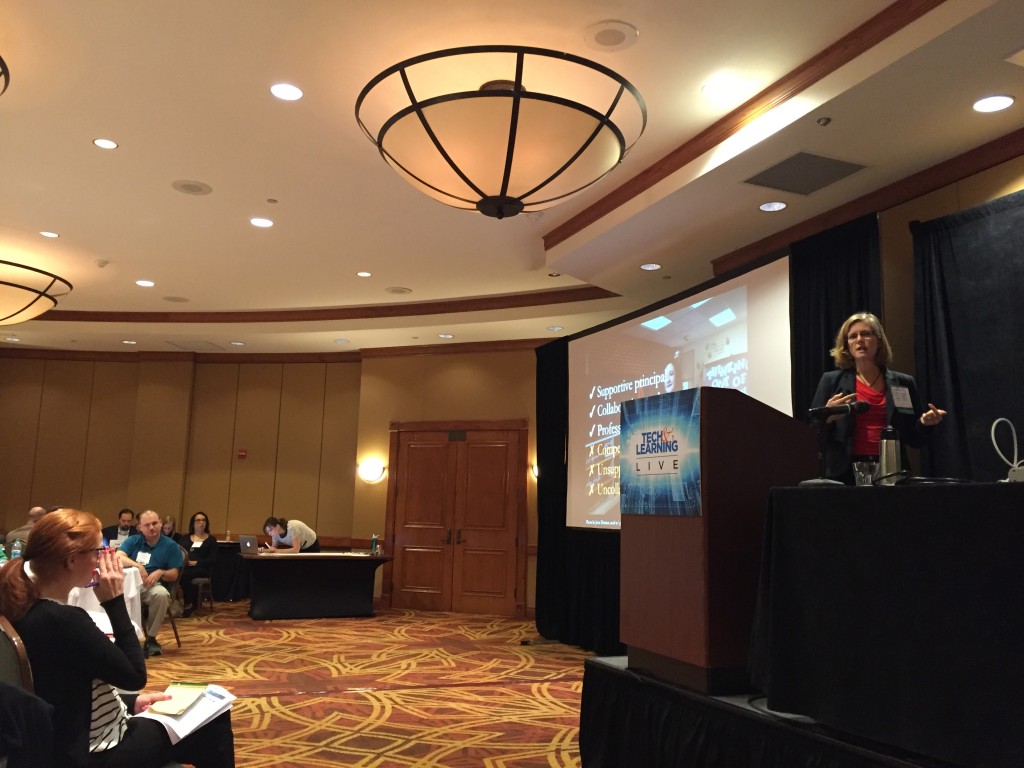 Yesterday, I keynoted the Tech & Learning Live Austin event. The day was spent considering professional learning and technology integration. In my morning keynote, I shared classroom and school-based research insights on technology integration. Specifically, I talked about how technology leadership, technology vision, and professional learning shape successful technology integration efforts in K-12 schools. The talented Tracy Clark @tracyclark08 sketched the content, which is also included below.
Yesterday, I keynoted the Tech & Learning Live Austin event. The day was spent considering professional learning and technology integration. In my morning keynote, I shared classroom and school-based research insights on technology integration. Specifically, I talked about how technology leadership, technology vision, and professional learning shape successful technology integration efforts in K-12 schools. The talented Tracy Clark @tracyclark08 sketched the content, which is also included below.
I ended the keynote with 5 research-based actions schools can do to pivot towards successful technology integration. They include:
#1: If school leaders must tend to their own technology learning*, we should be inviting them to the professional learning opportunities we arrange in schools and districts. And leaders – you should go! I’ve created opportunities for leaders to engage with actual technology-supported lessons for K-12 learning, and they loved this so much. *Research shows that only 2/50 states require technology preparation course for school leadership degrees, and examination of school leadership curricula reveals 92% of 137 programs do not mention technological courses or preparation. Of the 7%, the technology relates to data-driven decision making, not teaching and learning with technology.
#2: Librarians are the new technology integration change agent*! Use this to your advantage. Hire and cultivate technology-interested librarians and encourage their contributions to your leadership team. *Research shows that librarians contribute to technology leadership activities because of their knowledge of pedagogy, curriculum, technology, and collaboration. Enablers of librarians to do this work include (a) supportive principal, (b) collaborative teachers, and (c) engagement with professional organizations. A disabler is a competitive instructional technologies.
#3: While an optimal technology vision has had input from constituents, not everyone participates in that process*. To increase awareness and buy-in for your technology vision, enact tiered visioning through small groups or PLCs, grade level teams, subject area teams) who develop their own mini technology vision. Think of these mini-visions as a wedding cake – the largest cake bases are built from these small group mini-visions and support and relate to the overarching school or district vision (the top tier). This can enable top-down and bottom-up visioning and enactment at the classroom level. *Research shows more success with technology integration if the technology vision is learner-focused, curricular-focused, and pre-planned in collaboration with stakeholders, such as leaders, technology directors, librarians, teachers, parents, and students. They can emerge from top-down or bottom-up processes as long as the visions are communicated widely and garner buy-in among stakeholders.
#4: Nurture content-specific, ongoing professional learning, such as in professional learning communities (PLCs) that examine problems of practice (POPs)*. If these PLCs have created mini visions (see Pivot #3 above), it’s a logical next step to work on enactment (with support). *To have meaningful, transformative technology integration, research shows the materials (e.g., technologies) must change but that is not sufficient. You must also change teacher beliefs and teacher practices.
#5: If we are asking teachers to change their practices and beliefs, then we must support real risk-taking by working towards cultural change*. *Changing our beliefs and practices will challenge the “grammar of schooling,” which is a school’s engrained educational format and goals. Thus, the kind of change you are working towards will necessitate changes in school culture. School leaders who are successful in technology integration create value and appreciation and support for risk-taking, exploration, and innovation.
This presentation is licensed under a Creative Commons Attribution-NonCommercial-ShareAlike 4.0 International License. Please feel free to share with others, with attribution.
The content of what I spoke about is in the NOTES of the presentation.
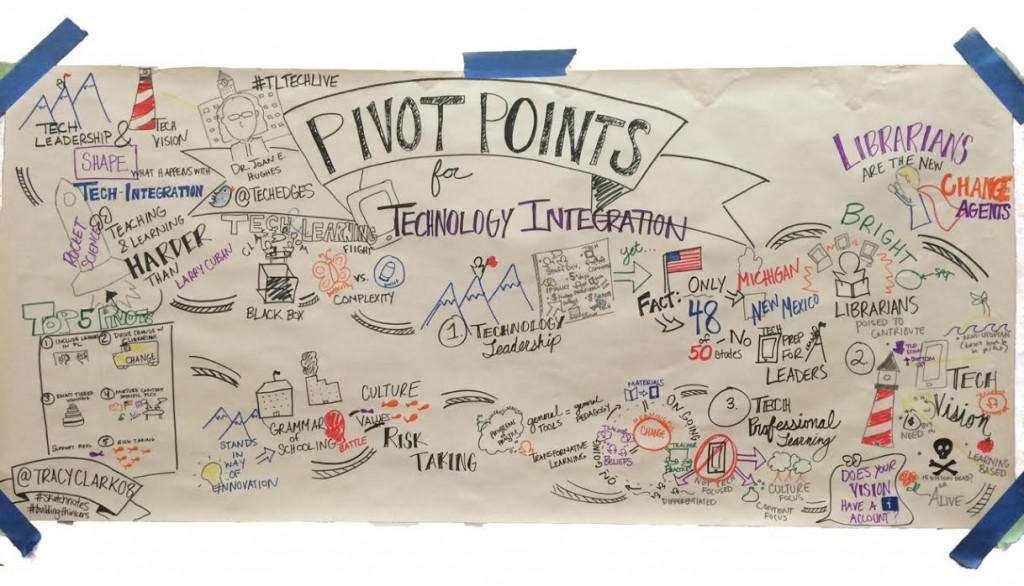 Sketch by Tracy Clark
Sketch by Tracy Clark
New Book Chapter: iTeach and iLearn with iPads in Secondary English language arts
A book chapter I wrote with Gregory Russell (@mrgsrussell), “iTeach and iLearn with iPads in secondary English language arts,” is now out in print in the amazing book, The New Landscape of Mobile Learning: Redesigning Education, edited by Charles Miller and Aeron Doering. This research stems from my larger research study of a suburban high school in their first year of implementing iPads across their high school population. Following is a description of our chapter (note: since we wrote this chapter almost two years ago, there has been empirical research published on the topic.)
“iTeach and iLearn with iPads in secondary English language arts” Chapter Abstract
Tablet computers like the iPad seem to be well-suited for educational purposes, but no empirical research yet exists that examines its potential. This chapter shares the stories of Brett and Julie, two veteran high school English teachers who are integrating iPads into their classrooms for the first time as a part of a 1:1 iPad initiative at Hilly High School. We share an analysis of their practices, developed over the past year via weekly classroom observations, formal interviews and numerous informal discussions. From these risk-taking practitioners, we identify and discuss issues related to pedagogy, assessment, new media literacies, efficiencies, student behavior, engagement, distractibility, and academic integrity. Results indicate that the iPad improves the efficiencies of learning activities but also introduces new classroom management issues. Many teaching and learning activities with the iPad can be both engaging or distracting. Our findings may prove useful to districts, schools, and practitioners who venture to establish similar ubiquitous tablet-supported educational innovations.
The book is available here:
http://www.routledge.com/books/details/9780415539241/
http://www.amazon.com/The-New-Landscape-Mobile-Learning/dp/0415539242
As always, if you would like to read my chapter and are unable to get a copy, please email me at joanh @ austin . utexas . edu
New Book Chapter: iTeach and iLearn with iPads in secondary English language arts
I co-authored a book chapter with Ph.D. student, Gregory Russell, that is due out in Spring 2013. The chapter emerges from my research study iTeach and iLearn with iPads and reflects a year of data collection in a high school that created a ubiquitous environment for iPad-supported teaching and learning. The article is set within what I think will be a superb collection of chapters in Charles Miller and Aaron Doering’s The new landscape of mobile learning: Re-designing education in an app-based world.
Scholarly Reference to the Book Chapter:
Russell, G. S. & Hughes, J.E. (In Press/Pub Date: Spring 2013.) iTeach and iLearn with iPads in secondary English language arts. In C. Miller & A. Doering (Eds.) The new landscape of mobile learning: Re-designing education in an app-based world. New York: Routledge.
Following is the abstract of the chapter:
Tablet computers like the iPad seem to be well-suited for educational purposes, but no empirical research yet exists that examines its potential. This chapter shares the stories of Brett and Julie, two veteran high school English teachers who are integrating iPads into their classrooms for the first time as a part of a 1:1 iPad initiative at Hilly High School. We share an analysis of their practices, developed over the past year via weekly classroom observations, formal interviews and numerous informal discussions. From these risk-taking practitioners, we identify and discuss issues related to pedagogy, assessment, new media literacies, efficiencies, student behavior, engagement, distractability, and academic integrity. Results indicate that the iPad improves the efficiencies of learning activities but also introduces new classroom management issues. Many teaching and learning activities with the iPad can be both engaging or distracting. Our findings may prove useful to districts, schools, and practitioners who venture to establish similar ubiquitous tablet-supported educational innovations.
We welcome questions and feedback regarding our work with this project. We are currently working on a manuscript focused on school leaders’ perspectives on the iPads and support mechanisms or iPad technology integration.
If you are unable to obtain a copy of this work, please email me [joanh at austin dot utexas dot edu], and I will gladly share a copy with you.
Chapter Publication: “The Iron Grip of Productivity Software within Teacher Education”
We are pleased to announce the publication of our chapter, “The Iron Grip of Productivity Software within Teacher Education” (Ch. 12) in the new book Developing Technology-Rich Teacher Education Programs. I co-authored this chapter with several Ph.D. students in our Learning Technologies program, including: Gloria Gonzales Dholakia, Yu-Chi Wen, and Hyo-Jin Yoon.
Our chapter’s abstract:
This chapter discusses several challenges and recommendations in obtaining the desired outcome from technology-rich teacher education programs, including a novice teacher prepared to make decisions supporting students’ subject-area learning with technology. The authors shape the discussion using select findings from two studies of preservice teachers enrolled in a technology-rich teacher education program at a U.S. university. The authors discuss the importance of the modeling relationship between instructors’ and preservice teachers’ experiences with digital technologies and describe productivity software’s enduring grip as the most used digital technology among preservice teachers during teacher education – even in technology-rich teacher education programs. The authors argue that teacher education’s overemphasis on productivity tools is not adequately preparing new teachers for the knowledge society in which teachers live, work, and educate. The authors argue that educational change, such as shifts toward technology-rich teaching and learning, will only be successful with a concerted change effort in both teacher education programs and PK-12 institutions.
Please see our full Chapter Description and ordering information. You may read the abstract and first page of the chapter in this PDF sample.
Browse the book’s Table of Contents with its 34 chapters.
If you are unable to secure a copy of our chapter, please email me [joanh at austin dot utexas dot edu] to get a copy.
Faculty use of technology: general faculty (chronicle of educ stats) and in teacher education (our stats)
A report from The Chronicle of Higher Education on faculty’s use of technology yielded the following data:
Image Source: The Chronicle of Higher Education; http://chronicle.com/article/Professors-Use-of/123682; June 25, 2010.
Discussion around these data include questions of whether technology makes a better teacher. Certainly an excellent question! We do not believe that using technology will magically make a teacher a better teacher – in fact, at first, many teachers (and university faculty) may face some hiccups as they learn to teacher in a more student-centered way, as many of these technological tools are best used by students to learn. Faculty do not experience hiccups when they adopt technology in support of the usual, teacher-directed pedagogy that we know very well.
We (Joan Hughes with Gloria Gonzales Dholakia, Yu-Chi Wen, and Hyo-Jin Yoon) have a book chapter currently under review called “The iron grip of productivity software within teacher education.” In the chapter, we discuss the importance of faculty modeling of optimal technology use for preservice teachers, as they learn a lot about what they will do as future teachers from what they experience in their teacher preparation program. Yet, we also describe productivity software’s (tools like PowerPoint, word processing, and spreadsheet suites) enduring grip as the most used digital technologies among preservice teachers during teacher education.
The Chronicle’s data (above) reminds us of the data we have collected from preservice teachers. Clearly, there’s ample room to discuss why productivity is emphasized so much (been around a long time, has affordances across disciplinary areas). But we believe an overemphasis on productivity tools is not adequately preparing new teachers for the knowledge society in which we/they live, work, and educate.
We are not faulting teacher education or PK-12 schools or preservice teachers. But we recommend that this focus will not change without concerted change efforts in both teacher education and PK-12 institutions because change in one won’t really have a ripple effect without simultaneous and complementary change in the other.
A glimpse into our data … reveals the high-use digital technology tools by student teachers in 2004-2007 were: email, presentation, search engine, web browser, word processing, and digital movies (student teachers are required to do a lesson study involving video recording their teaching). Overall, data from our student teacher respondents in 2004-2007 and 2008-2009 reflect a low, but emergent use of minimal Web 2.0 tools such as blogs, podcasts, wiki, and social bookmarking. We feel this is a positive trend toward better preparation of teachers to integrate technology into their future PK-12 teaching, but we feel a necessity for more emphasis and progress.
Determining Teachers’ Digital Technology Self-Efficacy
My colleague, Dr. Jayson Richardson, at the University of Kentucky emailed me inquiring about how we measure digital technology self-efficacy which he saw on some of our slides in SlideShare.
I figured that others might also be interested. I created a PDF of our scale measure which is based off of an earlier measure created by Cassidy & Eachus (2002). We made changes to the language and to some items that we felt were not pertinent once we expanded the notion of “computer” to that of “digital technology.” You can see our measure below with the items. You can download this file on slideshare.
We must acknowledge the good work of Cassidy & Eachus.
Cassidy, S., & Eachus, P. (2002). Developing the Computer User Self-Efficacy (CUSE) Scale: Investigating the Relationship Between Computer Self-Efficacy, Gender, and Experience with Computers. Journal of Educational Computing Research, 26(2), 133-153. http://baywood.metapress.com/link.asp?id=jgjr0kvlhrf7gcnv
